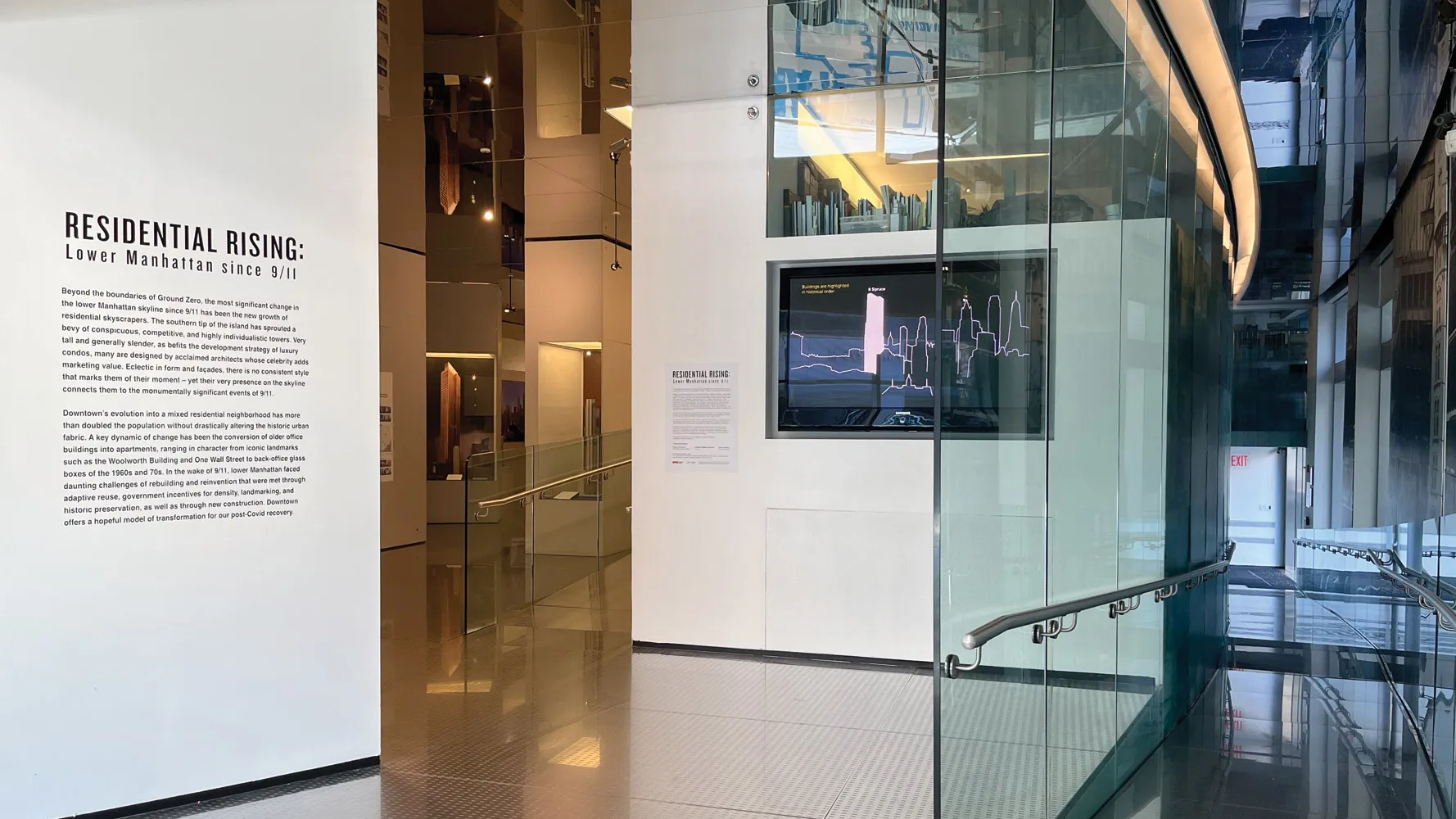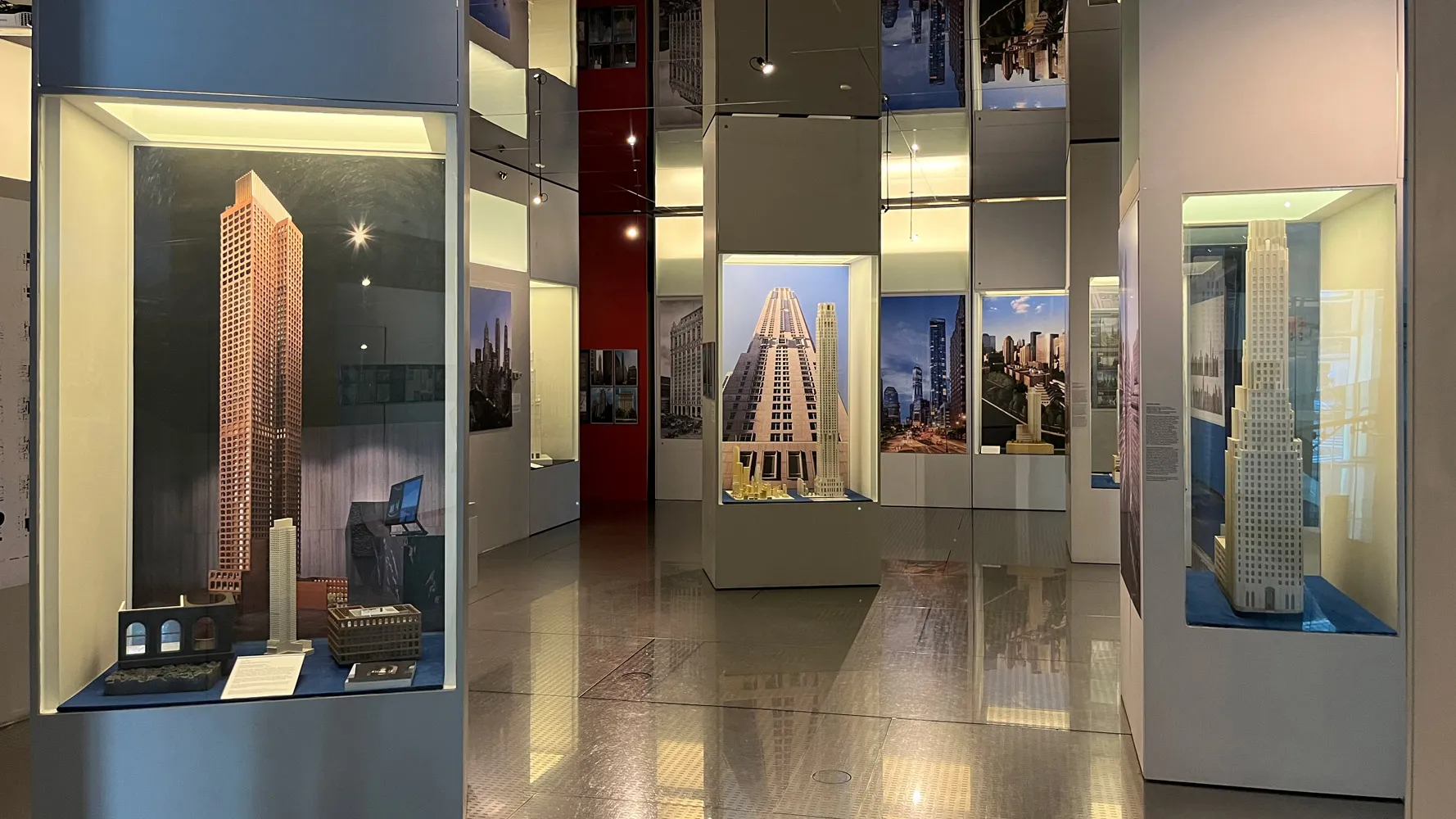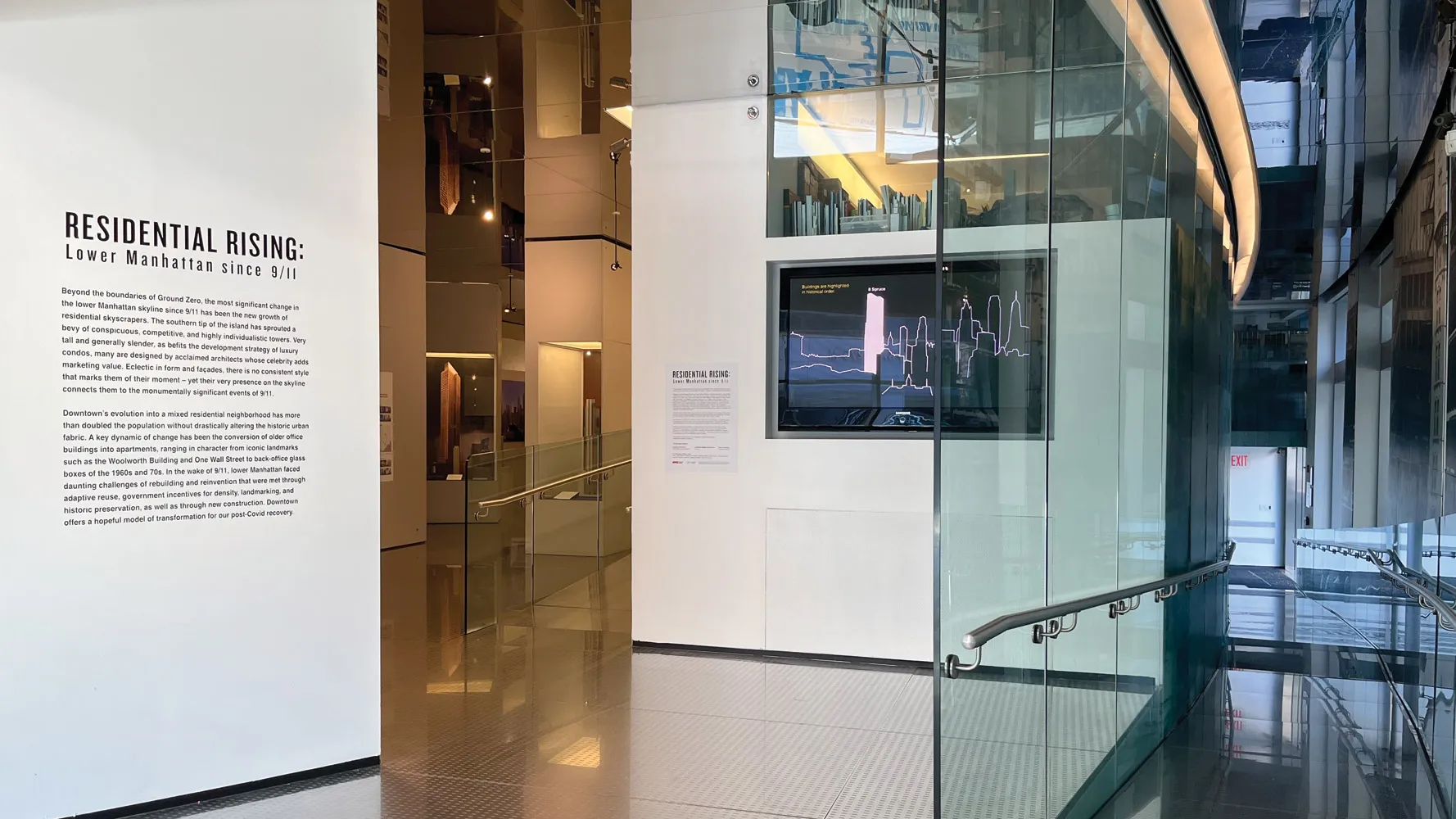The Skyscraper Museum Surveys the Fast-Paced Transformation of Lower Manhattan
Review: “Residential Rising: Lower Manhattan Since 9/11”






Lower Manhattan has undergone a seismic change over the last two decades. That urban district, roughly bound to the north by Canal Street, flanked by the East and Hudson Rivers, and bookended by the Battery to the south, has emerged as the fastest growing residential neighborhood in New York City—rising from just over 39,000 residents in 2000 to more than 80,000 in 2020. And it is difficult to conjure a more appropriate venue for an examination of this phenomenon than Skyscraper Museum, which has experienced this transformation firsthand. Founded in 1996, the museum opened in its permanent home in the neighborhood in 2004. Its current exhibition, “Residential Rising: Lower Manhattan since 9/11,” adroitly explores this trend with a succinct, informative survey, deploying imaginative infographics, architectural models, and professional photography.

1

2
56 Leonard Street by Herzog & de Meuron (1+2). Photos by Iwan Baan, © Herzog & de Meuron
“The dozen buildings we highlight in the exhibition are downtown's ‘stand-out' towers,” says the museum’s founding director Carol Willis. “They include the tallest on the skyline beyond Ground Zero and illustrate an astonishing variety of inventive forms and facades—from glass to stone, stainless steel, terra cotta, and cast concrete. Though they share no style, they are expressions of how New York developers began to value high-end design as a marketing feature as a result of 9/11.”

25 Park Row by COOKFOX Architects. Image © DBOX
The large-scale transformation of Lower Manhattan into a sizable residential community may come as a surprise: Wall Street and its environs are the symbolic hub of American capitalism and vast hordes of office workers used to arrive each morning to keep all that financial machinery humming. But as “Residential Rising” highlights, change has been coming since the decline of Manhattan’s shipping piers and the creation of Battery Park City, the planned residential community built in the early 1970s on landfill from the construction of the original World Trade Center. The transformative process picked up steam with the savings and loan crisis of the 1980s and 1990s, which hollowed out office space across New York City and left approximately 25 million square feet vacant. And the September 11th terrorist attacks not only scarred the city and the country but exacerbated the exodus of offices from Lower Manhattan. The current growth of remote working is only continuing the trend.

Ralph Thomas Walker’s One Wall Street. Image © DBOX
“Residential Rising” is a story of significant adaptive reuse, with nearly 60 office buildings in the neighborhood converted into apartment houses—some 12,000 units in total. In response to the Lower Manhattan vacancy crises of the late 20th century, both the Dinkins and Giuliani mayoral administrations passed a suite of incentives, such as property tax abatements and zoning changes, to spur residential conversions. Those wholesale use changes of historic commercial towers benefitted, too, from federal and state historic rehabilitation tax credits which dramatically reduced the costs of conversions. As examples, “Residential Rising,” focusses on three such landmark buildings: Cass Gilbert’s Woolworth Tower and West Street Building, and Ralph Thomas Walker’s Art Deco-icon One Wall Street.

David Adjaye's 130 William Street, exhibition model. Photo © RADII
Although much of the residential transformation stems from such adaptive reuse, the ubiquitous cranes and construction crews in the area point to the prominent role of new luxury skyscrapers in re-shaping Lower Manhattan’s cityscape. But as “Residential Rising” correctly notes, due to the super-slender nature of such buildings, and the space demands of luxury apartments, the new towers have had limited effect on residential growth in the area. For example, David Adjaye’s sleek new 130 William, featured in the exhibition, contains just 242 units in 66 stories.
The economic and labor disruptions spurred by the Covid-19 pandemic have had a similar impact on commercial districts across New York City—especially Midtown Manhattan—and several lessons can be gleaned from “Residential Rising.”

3

4
111 Murray Street by Kohn Pedersen Fox Associates (KPF) (3), and 50 West Street by Helmut Jahn (4). Photo (3) © Raimund Koch, (4) by Rainer Viertlböck, courtesy of Jahn/
“Downtown after 9/11 and Midtown post-COVID have a lot in common,” suggests Willis. “The office market shut off abruptly, but the opportunity to reinvent older properties for new uses has left room for the city to plan for a healthier, long-term future. Like Downtown, Midtown has a lot of Class B and C properties on its cross streets that could be converted to residential or live-work uses. Some might even be able to take advantage of historic preservation tax credits.”
As this exhibition makes clear, recent history has powerful lessons for the future of New York as well as other cities.

30 Park Place by Robert A.M. Stern Architects, installation view. Photo © The Skyscraper Museum. Tower photo by Peter Aaron/OTTO








